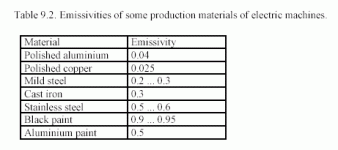Not Easy
I'm NOT saying that it's easy to predict the way air flows inside an electric motor. This link points to someone that seems to address the complexity: (it's actually a pdf)
http://www.cedrat.com/software/motor-cad/pdf/motorcad_IAS_2002_Digest.pdf
http://64.233.167.104/search?q=cache:eahEp0AaSEoJ:www.cedrat.com/software/motor-cad/pdf/motorcad_IAS_2002_Digest.pdf+forced+convection+electric+motor&hl=en&ct=clnk&cd=10&gl=us
End winding cooling
This area of machine cooling is renowned as being one of the most difficult to predict accurately. This is because the fluid flow (air in most cases) in the end space region of an electric motor is usually much more complex than that for flow over its outer surfaces. The flow depends on many factors including the shape and length of the end winding, added fanning effects due to wafters and salient poles, the surface finish of the end sections of the rotor and turbulence. Not withstanding the complexity, several authors have studied the cooling of internal surfaces in the vicinity of the end-winding. In the majority of cases they propose the use of a formulation of the form h = k1 x [1 + k2 vel **k3], where h = heattransfer coefficient (W/m2/C); k1, k2, k3 = curve fit coefficients and vel = local fluidvelocity (m/s). The k1 x 1 term accounts for natural convection and the k1 x k2 x vel **k3 term accounts for the added forced convection due to rotation. Fig 6 compares published correlations for end-space cooling, where relatively good correspondence is shown for such acomplex phenomena. In the main paper test and CFD will be used to develop rules for predicting the local velocity required in end-space convection calculation formulation. The relative accuracy of the windings temperature prediction and the use of such a simple formulation will also be discussed.
Airgap heat transfer
The traditional method for accounting for heat transfer across airgaps in electrical machines isto use the dimensionless algorithms developed from testing on concentric rotating cylinders.The main problem with such formulations is that the slot opening and in extreme cases salient poles make the use of smooth airgap cylinder data non valid. In the main paper the inaccuracies that can be expected by using a smooth airgap formulation will be discussed. Also, more recent work that has been carried out on developing formulations to account for slot-opening and salient poles will be reviewed.
 Look up "forced convection".
Look up "forced convection".







